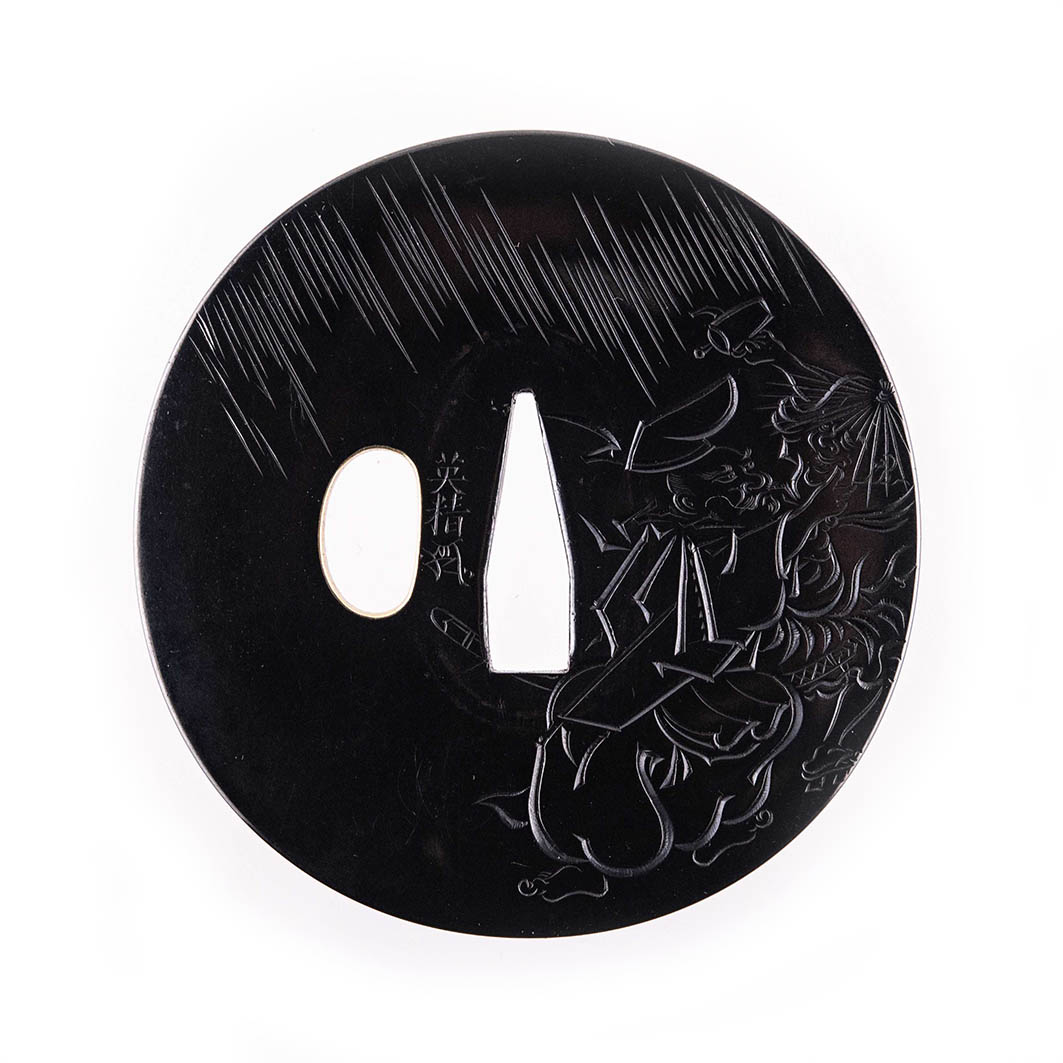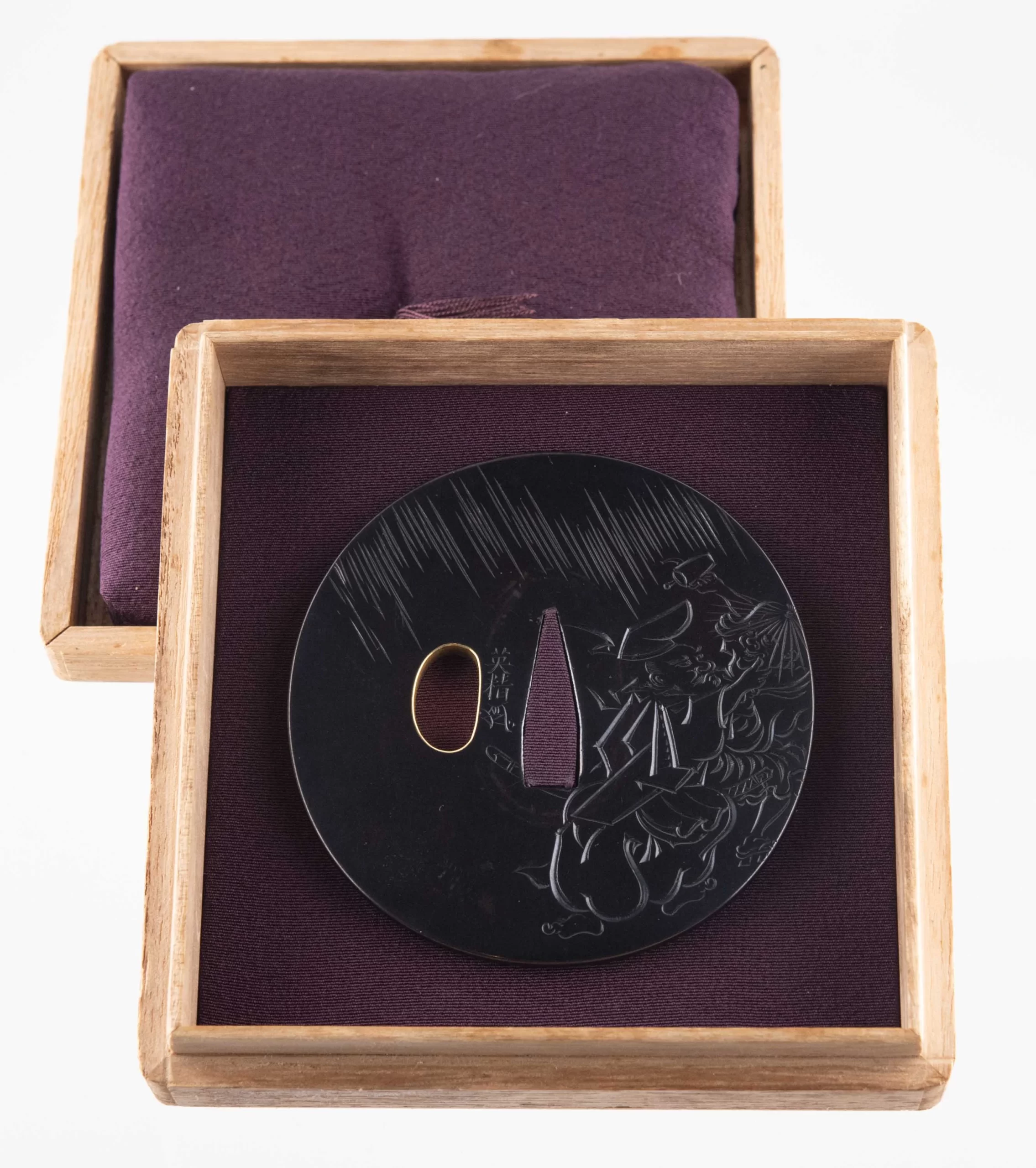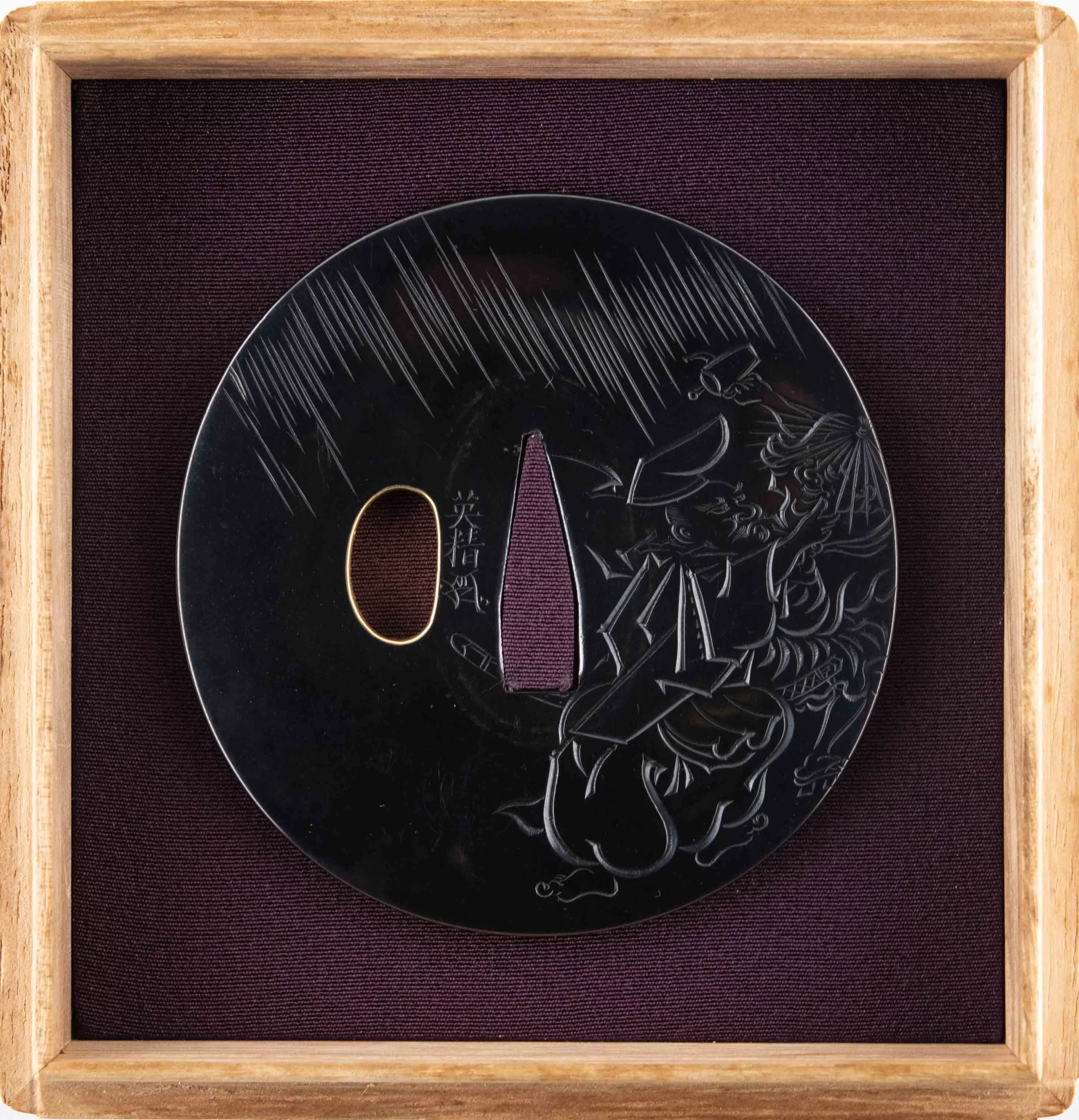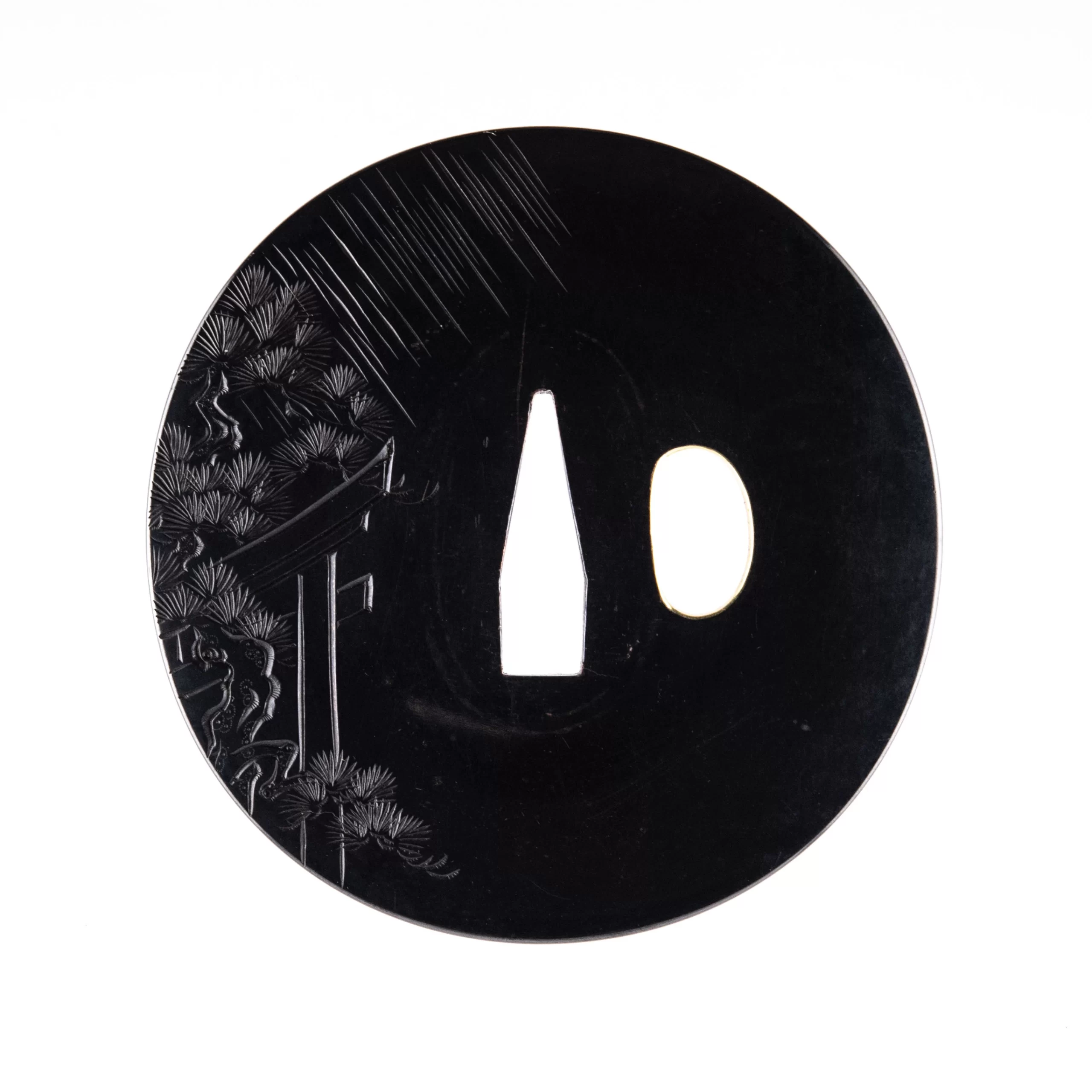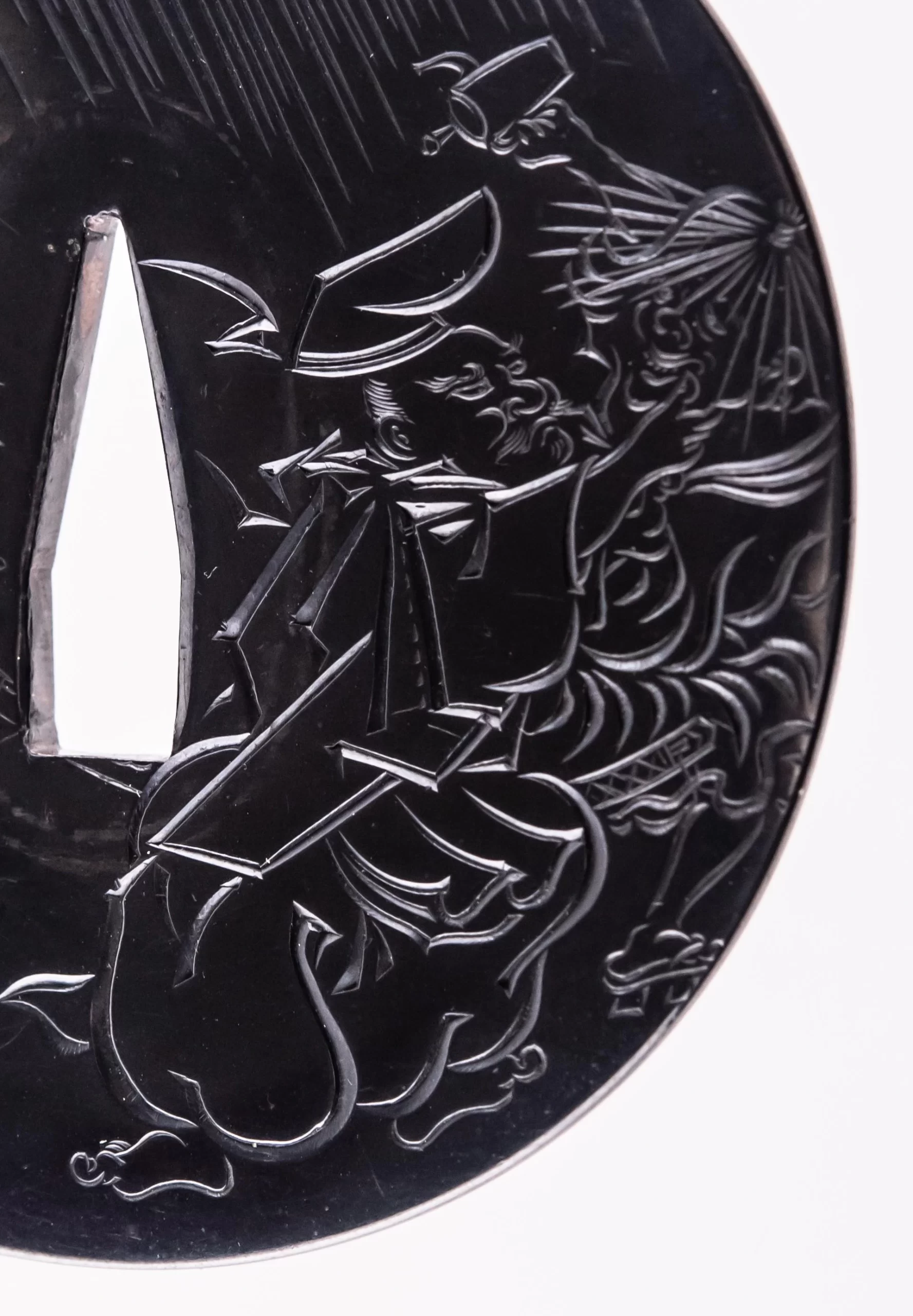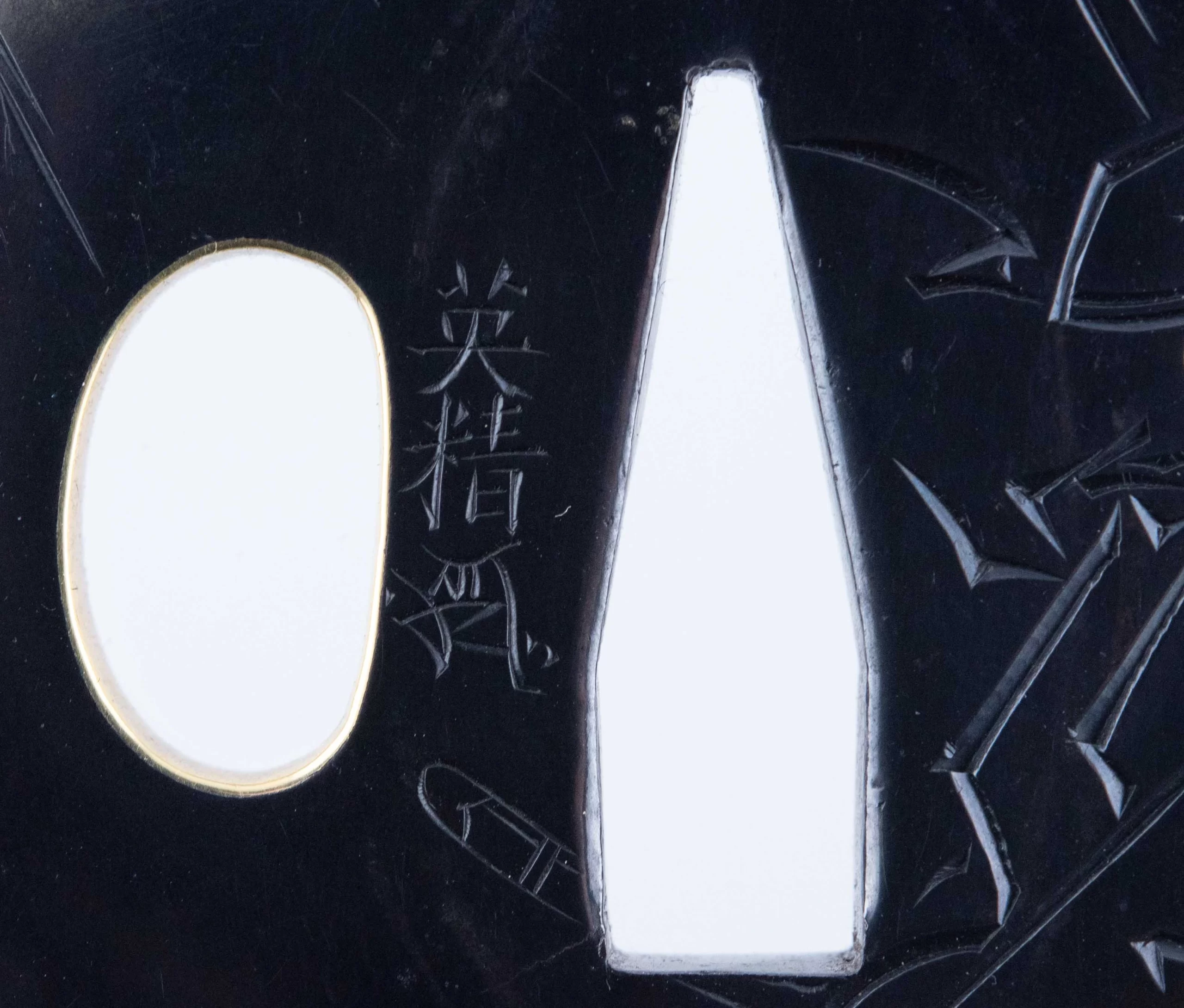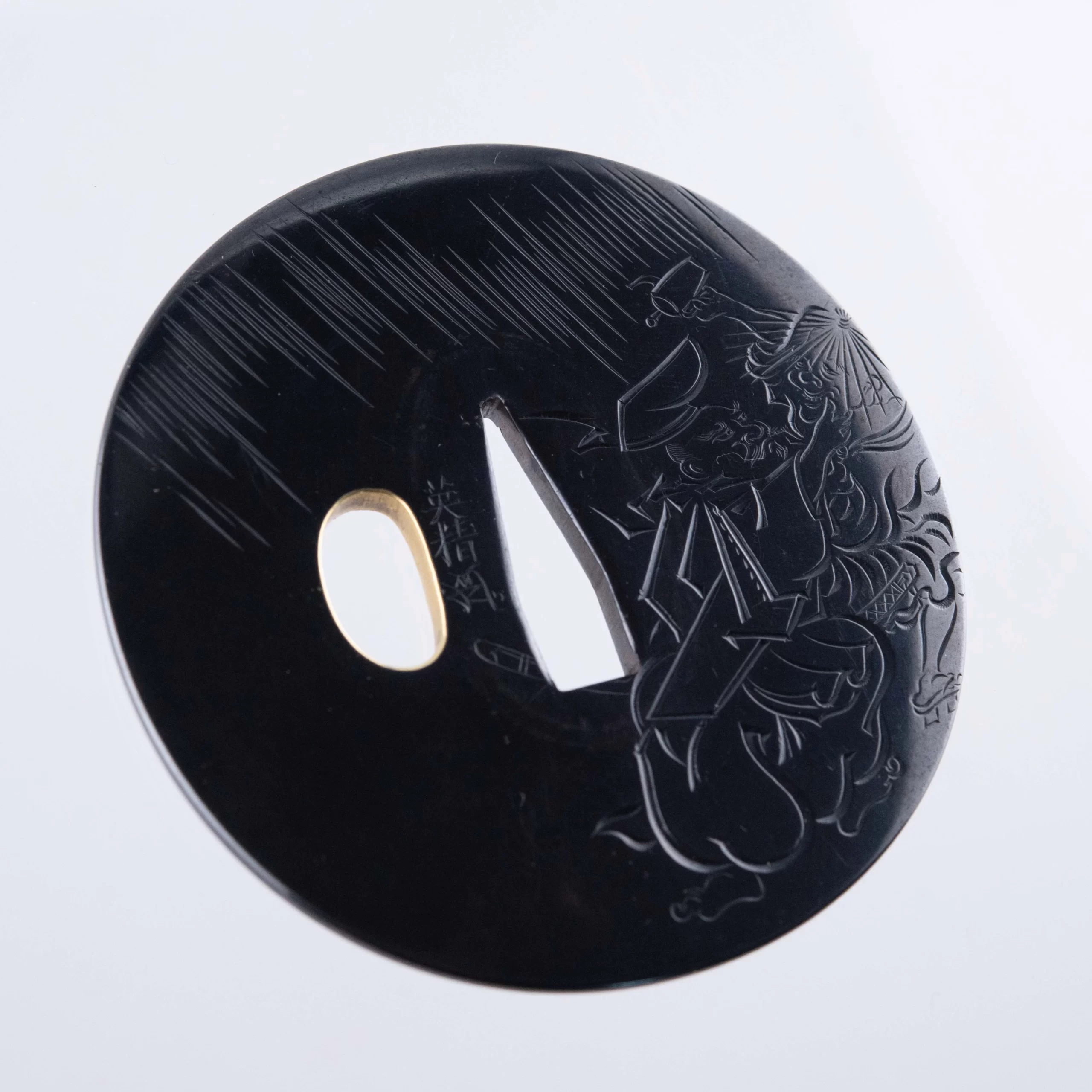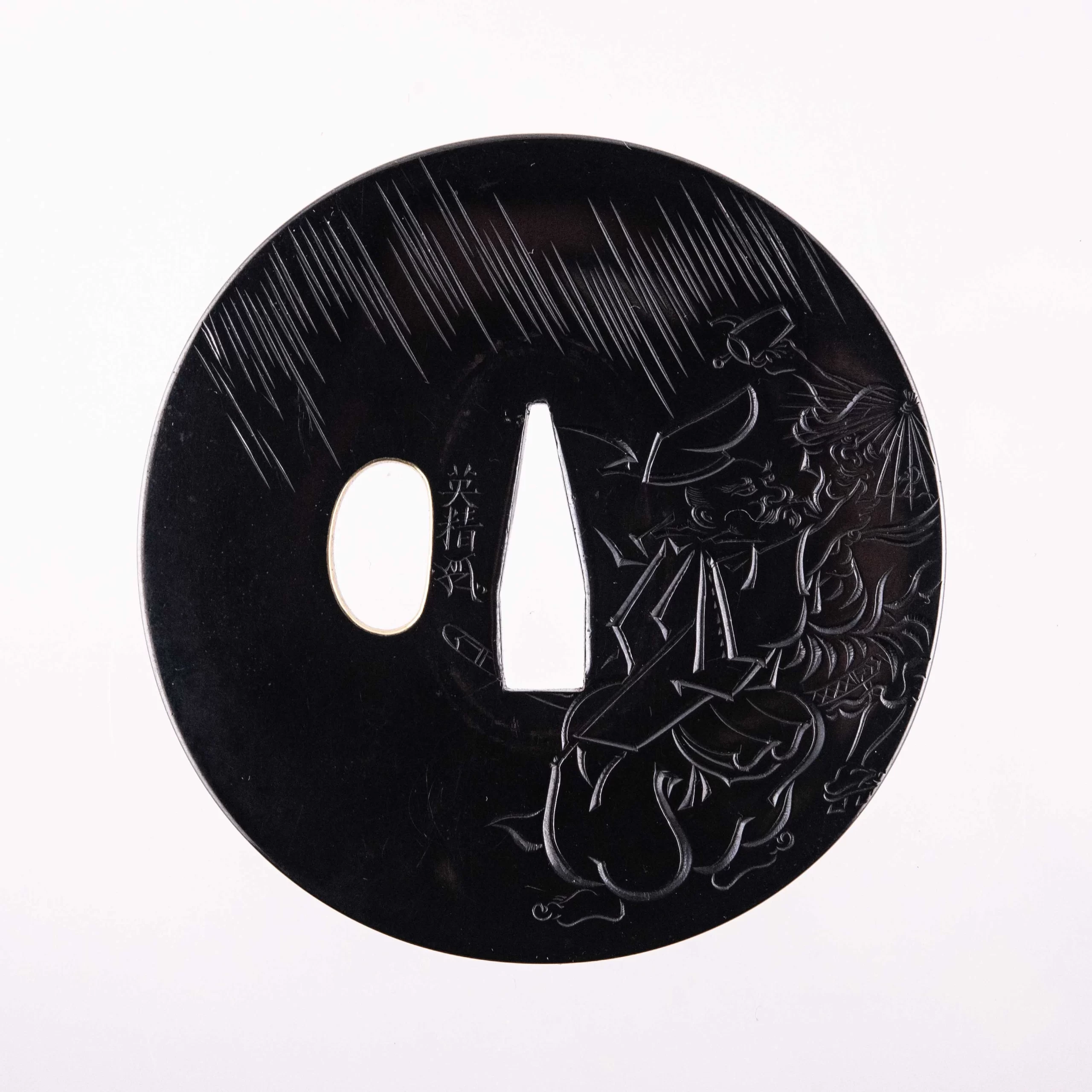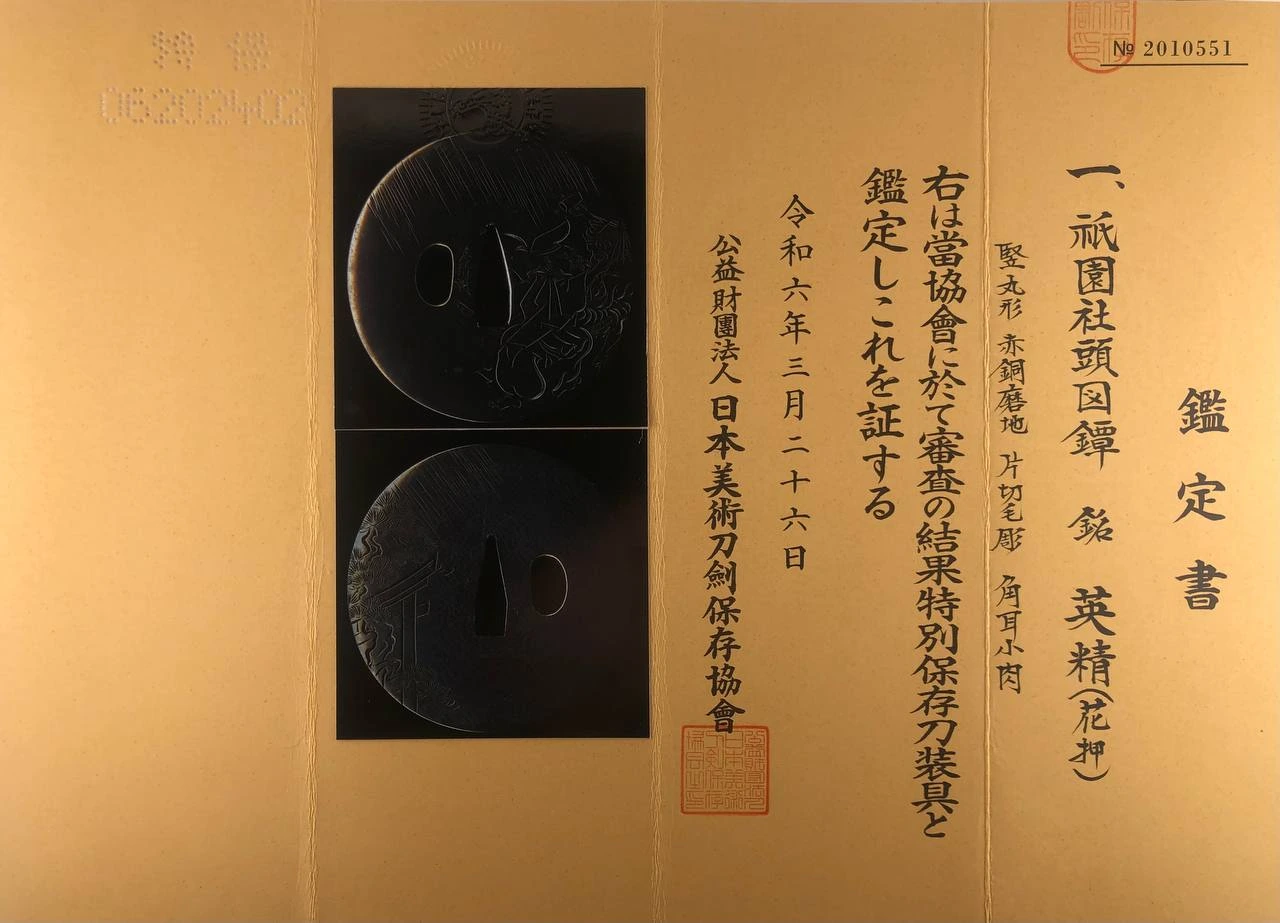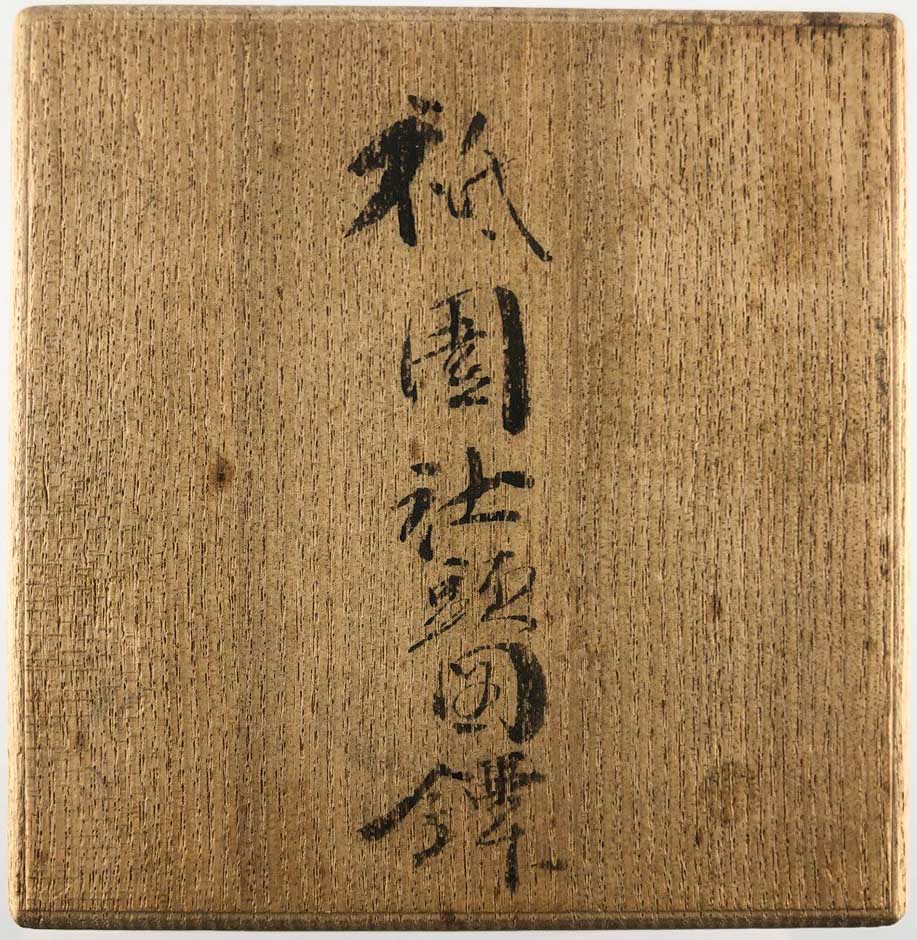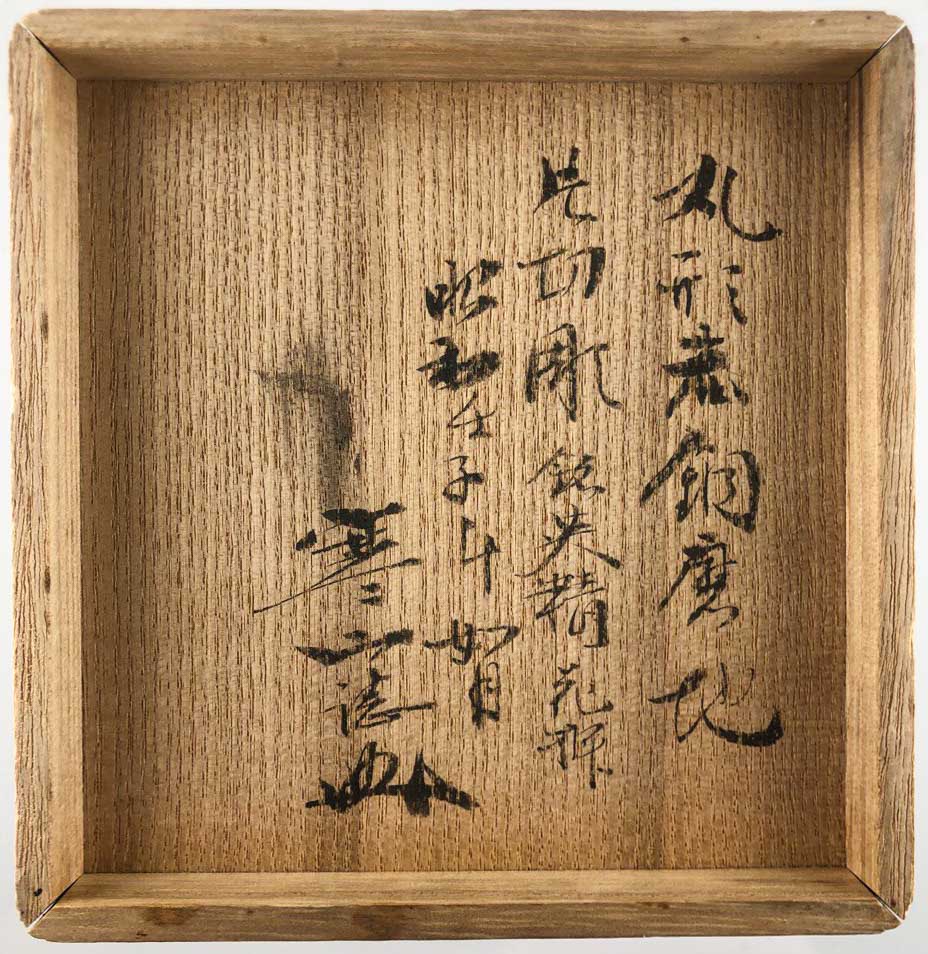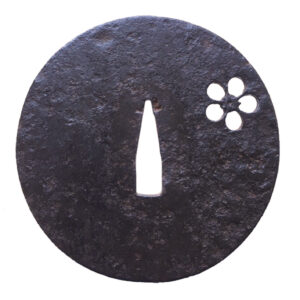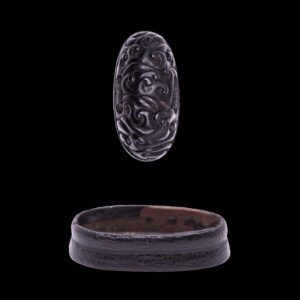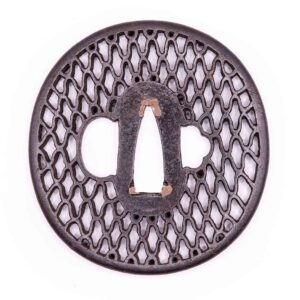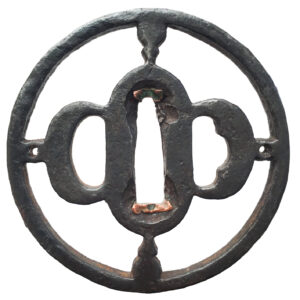This large and noble Shakudo Tsuba by Yokoya Terukiyo carries the typical traits of the Yokoya school. The design is carved in Katakiribori technique on the polished and highly reflective Shakudo surface which exhibits a blueish hue. The design elements are focused on the right side of the Tsuba, looking from the front, as this part faces to the outside when the sword is worn on the Samurai’s left. A nice and elegant detail is the decoration of the Kozuka Hitsu-ana which is highlighted by a fine gold foil on the inner surface.
The rather funny design of this Tsuba where we see a Samurai snatching the face of another figure behind him is based on old folklore and became most famous through a painting of Tsukioka Yoshitoshi. It shows Taira no Tadamori who is startled by the appearance of a priest who fills up the lanterns of the shrine with his oil can. The scene is taking place near a shrine in Kyoto’s Gion district which is why it is called ‘Gion Shato’, i.e. in front of the shrine in Gion.
Yokoya Terukiyo was the son of Yokoya Soju who was a student of the founder of the school, Yokoya Soyo (first generation). While not much is known about his father Soju, Terukiyo and his younger brother Soyo (second generation) continued the works of the Yokoya school and were quite prolific masters. Both of them studied under Yokoya Somin who also was a student of Yokoya Soyo (first generation) and is regarded as the founder of the Machibori Kinko as he was one of the first individual craftsmen who parted ways with the Goto school and started his own workshop, and more important his own style of work. While Somin’s student Soyo (second generation) was the slightly better craftsman than Terukiyo and thus continued the main branch of the Yokoya school, Terukiyo was followed by two generations both also named Yokoya Terukiyo, which is why it is difficult today to distinguish between their works. The Yokoya school was without a doubt the most influencial Kinko school in Edo.
This Tsuba is made in a very classical style of the Yokoya school, very similar to the works of Soyo (second generation). When we look closer at the Kao below the signature we find that it looks almost identical to that of Soyo.
This piece comes with a custom made box carrying a Hakogaki by Sato Kanzan describing the Tsuba and its design.
It has received an NBTHK Tokubetsu Hozon certificate.
Size:
H: 81.2 mm
W: 79.2 mm
R: 3 mm
Sd: 4.4 mm

